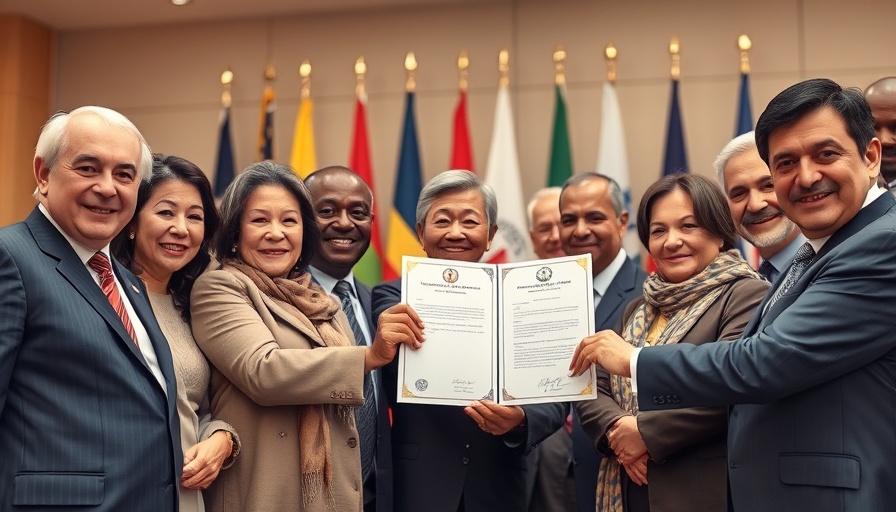
California's Redistricting Dilemmas: A Complex Landscape
The debate surrounding California's newly drawn congressional maps highlights a pivotal moment in the state's political landscape. Following the tireless efforts of the California Citizens Redistricting Commission, which aimed to create fair and even-handed political representation for its citizens, Governor Gavin Newsom's recent endorsement of a more partisan map has ignited discussions among both political insiders and everyday Californians.
Patricia Sinay, a member of the Redistricting Commission, reflected on the heart of the issue when she stated, "I got to witness democracy at its core." Her sentiment resonates with many who believe that fair maps are essential for honest representation. Over a year, the commission meticulously crafted boundaries with input from residents across the state, indicating a commitment to fairness and community representation.
The Balancing Act of Fairness and Strategy
With the specter of partisan gerrymandering rearing its head in California, the implications of these actions extend beyond simple map drawing. Sinay and her fellow commission members face disillusionment as their hard work risks being erased. As political motivations intertwine with governance, the effectiveness of their labor stands to be undermined.
Sinay's candid commentary regarding the proposed changes conveys a palpable sense of ambivalence. While opposing the aggressive tactics employed in Texas to favor Republican candidates, she questions whether California should respond in kind. For her, the consequences of drawing new, potentially skewed lines raise ethical concerns: "There are too many people right now that are hurting that could use that money in much better ways," referring to the high costs involved in holding a special election.
Voices of Disagreement: Diverging Opinions
In contrast, other commissioners like Sara Sadhwani advocate for the necessity of the new strategy, aligning with the sentiment that "extraordinary times call for extraordinary measures." With the 2026 midterm elections looming, the urgency to secure advantages for the Democratic Party fuels differing viewpoints among those tasked with drawing the lines. Sadhwani's participation in pro-gerrymandering rallies reflects a determined approach to mitigate perceived threats from opposing parties.
The public's reaction to this divergence illustrates the challenge of maintaining a balance between political strategy and the fundamental principles of fair representation. Citizens might resonate with Sinay’s concerns about misallocated resources but also recognize Sadhwani’s points about potential electoral gains.
The Cost of Change: Financial Implications for Voters
A critical aspect to consider is the financial burden these changes impose on California taxpayers. Holding a special election is expected to cost hundreds of millions of dollars, and for many residents, that amount could be better allocated to pressing state needs such as healthcare, education, and infrastructure repair. As Sinay pointed out, the expenditure should be weighed against how it helps the average Californian. It raises a question: are we prioritizing partisan games over practical governance?
Looking Ahead: Potential Outcomes and Community Impact
The choices made regarding redistricting will have enduring implications. For voters in and around Bakersfield, understanding who represents them and how those boundaries are drawn could determine the effectiveness of their local representation. Not only does it affect the election process but also influences the policies that govern their daily lives.
This contentious debate exemplifies the broader national dialogue regarding gerrymandering and fair representation. As many Americans express distrust in political institutions, the outcomes of these mapping decisions could either reinforce or further erode public confidence.
Engagement in the Process: What Can Citizens Do?
California residents should be vigilant and ready to participate in discussions and actions surrounding the redistricting process. Engaging with local representatives, attending community forums, and raising awareness about the importance of fair representation can empower citizens to shape their political landscape.
By advocating for transparent processes that foster inclusive dialogue, voters can push back against divisive tactics. Raising their voices in the public square allows individuals to reclaim ownership of their democracy, which was exemplified by the commissioners’ initial efforts.
The Road Ahead: A Call to Action for Californians
The current redistricting efforts present a challenge to what many view as a hard-fought victory for representative democracy in California. As voters consider the implications of changing political maps, they are encouraged to participate actively in the conversation surrounding gerrymandering. By evaluating the consequences these changes may have on community representation, citizens can voice their opinions and ensure that their needs remain prioritized.
California’s democratic processes are ultimately reflective of its citizens' values and actions. The successful engagement of people in Bakersfield and beyond will prove crucial in navigating the complexities of redistricting, ensuring that every voice is heard, and every vote counts.
 Add Row
Add Row  Add
Add 



Write A Comment